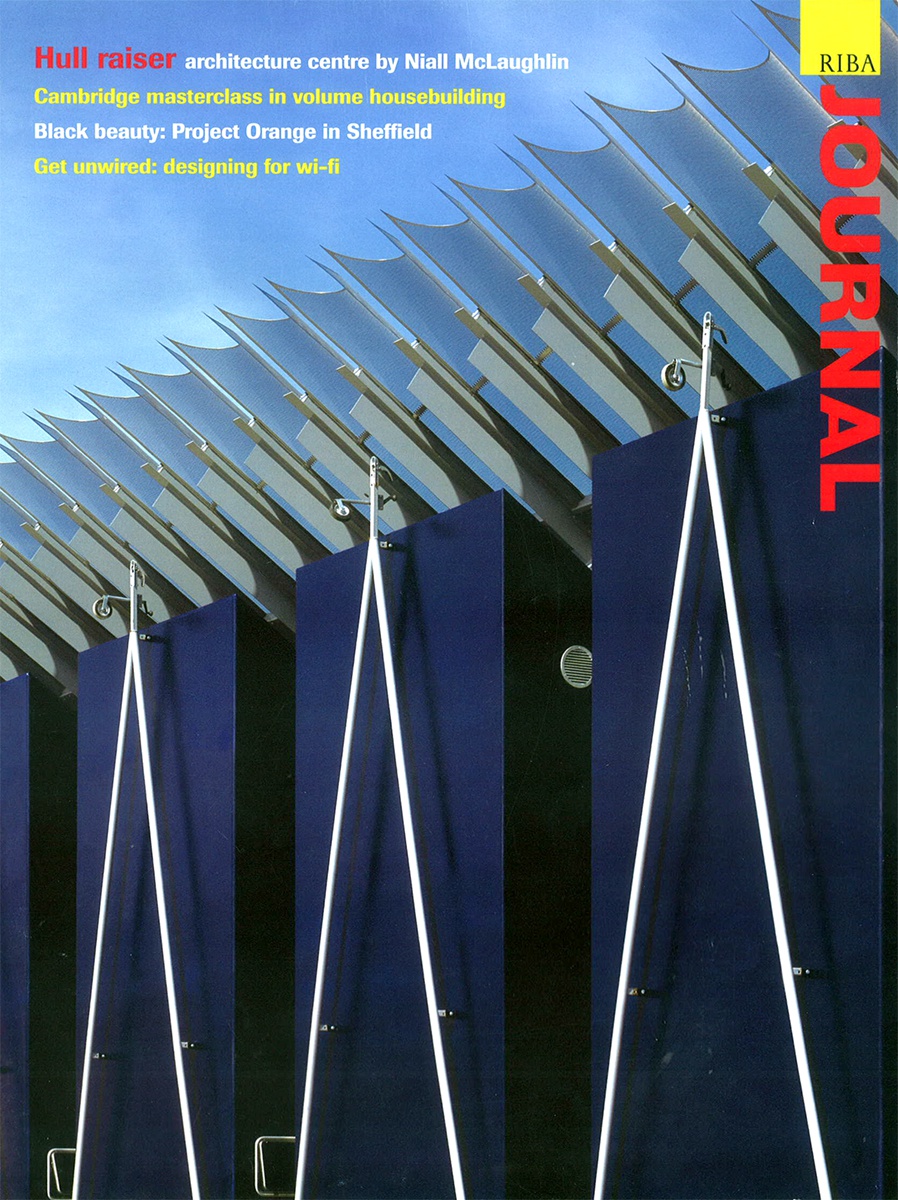Sunny Side Up - RIBA Journal
Issue 113.06
June 2006
Text Jan-Carlos Kucharek
Images Nick Kane
Níall McLaughlin Architects symbolically rich, culturally ambitious Hull Architecture Centre is an expression of faith in the resurgence of a once-great city.
The fact that Arc, Hull’s new architecture centre, is there at all is a surprise to everyone, not least the client. Architect Níall McLaughlin recalls how during initial discussions with Hull Highways Agency, the scheme was nearly scuppered because it felt the building would prove too much of a distraction for the articulated trucks rumbling along the A63 en route to the Humber Bridge. The firm found itself having to conduct a bizarre risk assessment in which it argued that the centre was no more a distraction than advertising hoardings.
If you’re approaching over the cusp of Castle street overpass, you see the agency’s point. Arc (Architecture Regeneration Communities) is a very difficult building to ignore. That is as it should be, and certainly how its facilitator and champion Susie Hay likes it. The centre represents years of effort by Hay, who chairs Arc, and her executive committee to invigorate the cultural and urban debate for the city, which since the 1970s has suffered massive economic decline.
Hay’s original agenda was to kick-start an outreach programme highlighting design issue through seminars and workshops in the local schools. With financial support from Yorkshire Forward and City Ventures, along with three other funders, the idea of a building began to gain credibility.
Of the six practices it approached, the committee was impressed by McLaughlin’s Bexhill bandstand and sympathetic to his talk of drawing the design out the everyday experiences and histories of the city’s residents. With the prospect of no permanent site, the building was to be mobile; its language expressing this sense of temporality.
The practice paid numerous visits to local schools and community groups and tried to get under the skin of Hull and its residents. They listened to stories of the docks, and the trawlers stationed permanently out at sea. They heard about the opening of the Humber bridge and how the old ferry service went out of business almost overnight, and how this was just another symptom of the city losing the connection with its estuary and the sea beyond.
The result is what Susie Hay calls ‘a lean-to to learn from’. The concept is extremely simple, as is the resulting space, but the formal moves have been driven by ideas that came out of those initial conversations. A stone’s throw from here is the old heart of Hull, but standing at the door of the centre you’re unaware of this; the overriding sense is of being on the periphery. Shut your eyes, though, and you can see the building hum as its garden of mini wind turbines and ‘open books’ of photovoltaics turn to the wind and sun (technology subsidised by sponsors). Together with the perforated steel sheets that angle up from the ground to form the roof and frame them, these are the main signifiers of the building.
Inside you’re occupying a single triangular volume, the roof reaching up to bear on five blue timber ‘caravans’ (Hull is the home of Swift Caravans), which after being towed to site on their own wheels, were placed in line and merely upended to house the boiler, kitchenette, toilets, office spaces and storage.
The building sits on concrete pad foundations, the loads taken on small section steel beams – another local echo: floating foundations were typical for the locality, houses on friction piles driven into the mud of the Humber estuary. The roof, sponsored by a local steel company, comprises a polycarbonate sheet cavity overlaid by curved perforated stainless steel directing a cool air flow over its surface and providing a degree of solar shading. At the foot of the roof a trough becomes an active water feature, enlivened by plastic sprinklers that condition the air as it passes over the polycarbonate cavity.
